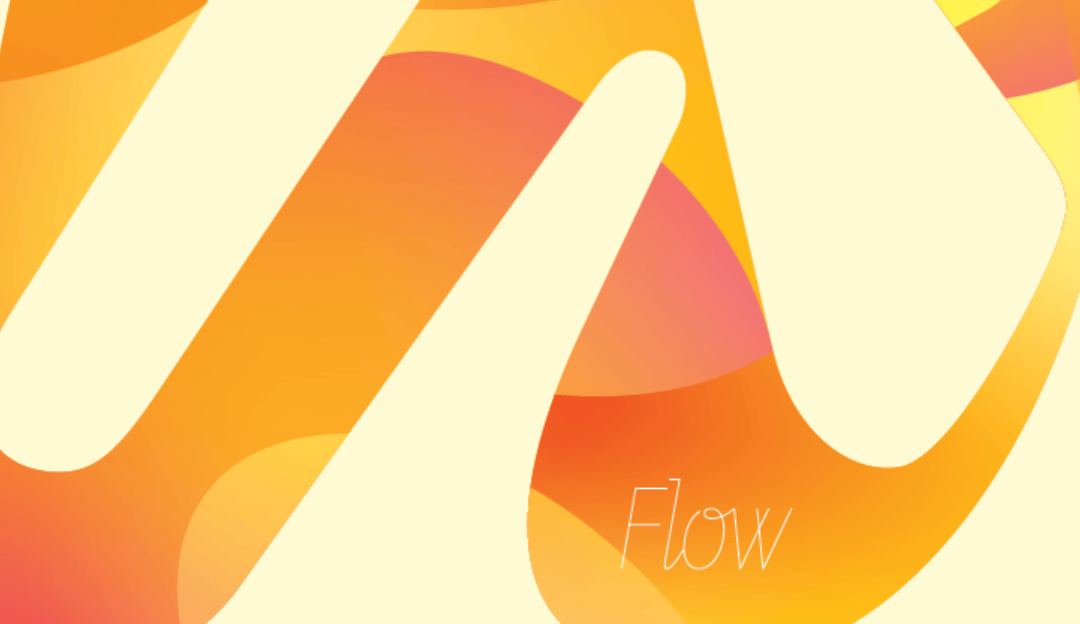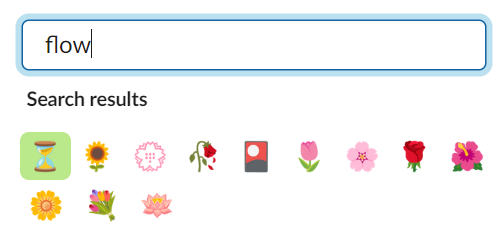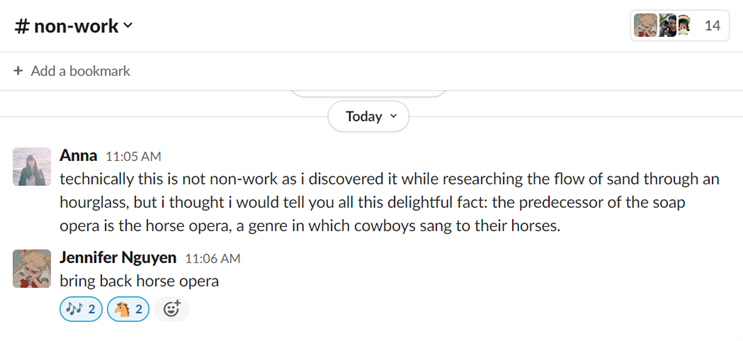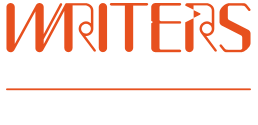
As an introduction to Season 2 of our 2023 program of events, Writers Victoria’s Program and Partnerships Manager, Anna Kate Blair, reflects on the 2023 theme: FLOW.
I wrote, in my introduction for Season 1, that we’d chosen to theme 2023 around flow as an aspirational concept, something that seemed to be missing in 2022. Six months into the year, I still don’t feel like I’ve figured out flow, but that’s okay, I think, because nothing meaningful is ever mastered, particularly when it relates to writing, a practice that can’t be perfected.
In times of crisis, I turn to Slack emojis. When our print program arrived in the mail, I was the only one in the office. I took a photograph, uploaded it and typed ‘flow’ into the computer. I found, amidst the flowers, a picture of an hourglass, sand flowing through its aperture.

I wrote about water, when thinking about Season 1, but water isn’t the only thing that flows. I realised, looking at the hourglass, that sand made much more sense for Season 2. The cover of our program, after all, is yellow and orange, dry and hot, like sand and molten lava.

I’ve had, since I saw the hourglass emoji, the opening refrain of Days of Our Lives in my mind: like sands through the hourglass, so are the days of our lives. It sent me off on a tangent, writing this, in which I learnt about soap opera (and considered whether our members would want to learn how to write soap opera – do you?) and then about its precursor, horse opera.

I’m not sure that thinking about horse opera deepens my understanding of flow, but Days of Our Lives has been onscreen for over fifty years, with over 14,000 episodes scripted to tight deadlines. I suppose, then, that the writers of Days of Our Lives have really mastered flow, with one story becoming another, separating and diverging as characters come and go.

This flow of characters in and out of storylines isn’t confined to soap opera but is a fact of programming and of organisational life. We see, in Season 2, familiar tutors returning to introduce unfamiliar subjects; there are consistent through-lines, like our popular Online Feedback Clinics, juxtaposed with a range of new workshops. Some of our staff members will run Lunchtime Bites, free for members, that explore the concept of flow more explicitly; Jennifer Nguyen, who joined Writers Victoria in February, will guide us through the practicalities of accessing flow states, while Lou Garcia-Dolnik, currently in Italy contemplating poetry and air, will introduce us to lessons they are learning from wind and sky, a space of flow that we often miss when we stare down at the water.

Slack labels the emoji as hourglass_flowing_sand, but emojipedia names it Hourglass Not Done. It indicates that time is passing, I read, but life is short. It’s strange that this emoji, popping up when computer programs freeze, asks for patience whilst borrowing the visual language of the memento mori. We are, I’m reminded, almost halfway through the year already.
The opening sentence of Days of Our Lives was recorded in 1966 and kept after the 1994 death of Macdonald Carey, the actor who intoned it. I don’t think I’ve ever seen an episode, but the phrase, played over a soundtrack of flutes and bells, finessed by the same composer who worked on Bewitched and I Dream of Jeannie, makes me nostalgic. I wonder if mastering flow, ultimately, stems from accepting the fact that time passes.
Hourglass Not Done, as a label, feels at once naïve and rebellious.

The flow of sand is different to the flow of liquid. In the case of water, flow is determined by fluctuating pressure, as liquid rushes toward an aperture; sand, though, redistributes weight so that the pressure remains constant and the flow even.
This makes sense to me, architecturally, though I won’t pretend to understand the science.

Sand, after all, isn’t liquid. We can build castles with it, walk atop it. It won’t soak into paper. The grains remain separate even when packed tightly. It moves, though, and carries the coastline with it, even when dunes are fenced or planted to stop erosion.
Some of these things are true of writing, but not all.

I’ve overlooked another flowing substance evoked by the cover of our program: molten lava. I’ve only touched on air, though it often provides the pressure that moves sand and water. In truth, flow is rarely about whatever’s flowing.
Writing, too, is shaped by pressure, by circumstance, and perhaps the role of a writers’ organisation is to cultivate an appropriate atmosphere, a space in which words flow. It is prompts and deadlines, new structures and methods, emojis and effort, that generate the dripping, rushing or babbling of language in the mind or assist in the construction of sandcastles.
I scroll down through the emojis, wondering if I’ll find another way to capture flow, my eyes moving over people surfing, a rollercoaster, falling leaves and the dolphin that I used as a dinkus in my last program introduction. I consider the volcano. My cursor hovers on an emoji that looks like a puff of breath, labelled dash.
Hourglass Not Done, I think, and google molten lava.
Explore the 2023 Season 2 Program by downloading a PDF of the program here, or visiting our events calendar here.
